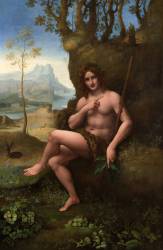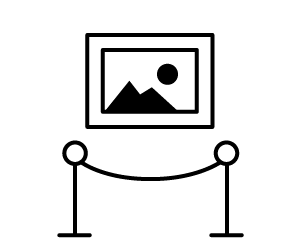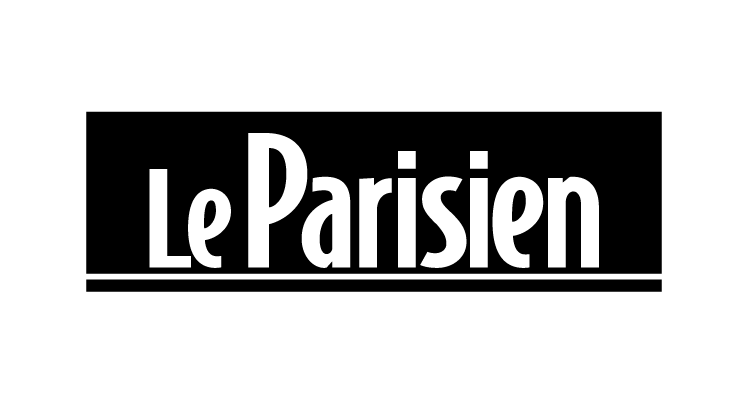Artwork of Leonardo da Vinci canvas prints & artprints
Leonardo da Vinci is one of the most emblematic artists of the 15th and 16th centuries. A forerunner in many fields, his creations continue to inspire many artists today, and his "total" approach to art, incorporating painting, sculpture and engraving as well as science, architecture and engineering, made Leonardo da Vinci one of the most influential artists of his time, influencing the bourgeoisie and royalty alike.
Discover the finest Renaissance paintings by Leonardo da Vinci available in the catalogue, including the results of the artist's work on anatomy with "Vitruvian Man" and "The Foetus in the Womb", the pencil sketches that were the precursors of technical drawings for Renaissance engineering and architecture, such as "The Wing" and "Centrally Planned Buildings", or his paintings, including the most famous painting of the Renaissance, "The Mona Lisa", in the collection of the Louvre, or his gigantic fresco "The Last Supper".
Treat yourself to an art reproduction of the world's most famous Florentine painter, and find out more about his biography.
Biography of Leonardo da Vinci
Leonardo da Vinci: a precocious young artist
Born in 1452 in the town of Vinci, after which he was named, Leonardo da Vinci, or Da-Vinci in his mother tongue, was recognised by his father, Ser Piero da Vinci, a notary from a good family, for his talent as a draughtsman from an early age. While still a child, he was sent to Florence, to the studio of the painter and great Italian master of Florentine painting, Andrea del Verrocchio, where he learned about 15th-century Italian painting, oil painting and portraits, as well as engineering, architecture and machinery. It was here that he met other great Renaissance artists in the making, such as Sandro Botticelli, who frequented the studio at the same time. In the city of the Medici, in a Renaissance style strongly inspired by Verrocchio's techniques, Da Vinci made a name for himself by introducing a new technique that left the contours deliberately uncertain, and that was to change Renaissance painting: the sfumato technique. With this style of painting and his talent, the painter's works impressed his mentor, who let him work on some of the decorative elements of the famous "Baptism of Christ" (1470), and commissions began to pour in for Da Vinci, who completed his apprenticeship and joined the Guild of Saint Luke's painters aged just 20.
Leonardo da Vinci at the service of the Duke of Milan
After becoming one of the most fashionable painters of the Italian Renaissance in Florence, but no doubt vexed at not having been chosen along with some of his contemporaries to paint the frescoes in the Sistine Chapel, Leonardo da Vinci decided to move to Milan, and to Duke Ludovico Sforza, who was to become one of his main patrons. In his service for 17 years, Da Vinci was highly productive, firstly in painting, with canvases such as "The Madonna of the Rocks" (1486) and "The Lady with an Ermine" (1490), but also with his most famous fresco, "The Last Supper" (1498). But at the Milanese court, Da Vinci did not want to confine himself to painting. He had long hoped to develop his talents as a sculptor, architect, inventor and scientist, which he did by embarking on the creation of numerous projects. It was during this period that he immersed himself in human anatomy, and set about creating a book containing original drawings including "Vitruvian Man" (1490), but also in science and engineering with the study of mathematics and mechanics. Da Vinci was also involved in sculpture, with plans for a gigantic equestrian statue weighing 100 tonnes of bronze, the foundations of which were never built because of the war knocking at Italy's door. In architecture too, the painter of the artistic Renaissance distinguished himself by being appointed as the city's urban and architectural engineer. Leonardo da Vinci became increasingly respected for all his work, and during his lifetime he became one of the major Italian artists of the late 15th century Renaissance.
Leonardo da Vinci: Italian architect and engineer
In 1499, King Louis XII of France took possession of the city of Milan. It was time for Leonardo da Vinci to leave. After several trips, from Mantua to Venice, where he was consulted in his capacity as architect, engineer and painter, he returned to Florence, where he settled. Once there, he wanted to reclaim his place in the city. To this end, he re-joined the Guild of St. Luke, contributing impressive sketches such as "Saint Anne, the Virgin, the Child Jesus and St. John the Baptist as a Child", and accepting a commission from Francesco del Giocondo, which resulted in his famous painting, still full of mystery to historians, "Mona Lisa", also known as "Portrait of Mona Lisa", painted in 1513 or 1514. He also met artists who influenced him, such as Michelangelo, whose nude paintings inspired him to resume his studies of human anatomy. At the call of King Louis XII's lieutenant-general, however, he returned to Milan, and entered the service of the King of France to work on various artistic projects. When Louis XII lost his influence over the Duchy of Milan, Da Vinci joined the service of Leo X in Rome, the new pope also known as John de Medici, a member of the famous Florentine family. He surrounded himself with all the most fashionable artists of the time, painters, sculptors, architects and scientists. Unlike Raphael and Michelangelo, who worked on several sites in Rome, Da Vinci wished to distance himself from painting. He practiced it only in search of the perfect sfumato, retouching the few paintings he was able to take with him. He then concentrated on engineering, botany, anatomy and science, and was even involved in a project to drain marshes.
Leonardo da Vinci's last years in France
Despite his undoubted talent, none of the projects from his Roman period really saw the light of day, and in disappointment, he joined the court of the new King of France, Francis I, who had just reconquered the Milan region. A true friendship developed between the sovereign and the artist. Da Vinci took up residence at the Château du Clos-Lucé, near the Châteaux de la Loire and the Château d'Amboise, which he gradually transformed into a pleasure building. Although he no longer painted, he enlisted the help of his apprentice painters and architects to paint and create a number of sketches, models of flying machines and other inventions, turning his studio into a veritable museum and cabinet of curiosities like no other. Da Vinci was even appointed the king's first painter, engineer and architect. Leonardo da Vinci also worked in other places, such as the Château de Chambord, with its double spiral staircase, an architectural jewel that impressed all the royal figures, like Charles V, during his visit to the château, or between Amboise and Romorantin, where he used his engineering talents to drain hundreds of hectares of soil to make the region more viable. On his death in 1519, in his final resting place at the Manoir du Cloux, also known as Le Clos-Lucé, Leonardo da Vinci left behind many of the greatest works of the Renaissance, as well as work on historic monuments.
The legacy of Leonardo da Vinci
Appreciated during his lifetime by the Italian bourgeoisie and the kings of France, Da Vinci's versatility marked the 15th and early 16th centuries even more than other Renaissance painters. Inspired by and spreading the art of the Florentine school throughout Europe, he is regarded today as one of the great masters of art history, and one of the greatest Italian painters. His vision, which brought art and science closer together, inspired many artists in their search for "total art", and instituted a new way of thinking about architecture, research and engineering, with the development of technical drawing. While many of his works can be found in the permanent collections of Italian and French museums, such as the Louvre, home to the world-famous Mona Lisa, or the Milan Museum of Technology and Science, he can also be found all over the world, in the collections of the Montreal Museum of Fine Arts, the Budapest Museum of Fine Arts and the Victoria and Albert Museum in London. His influence can also be seen in many Florentine, Milanese and Roman palaces, as well as in the châteaux of the Loire Valley, where paintings, frescoes, sculptures and other architectural masterpieces still adorn the salons and galleries of these buildings.
Learn more about the life and the works of Leonardo da Vinci.
















































































































































